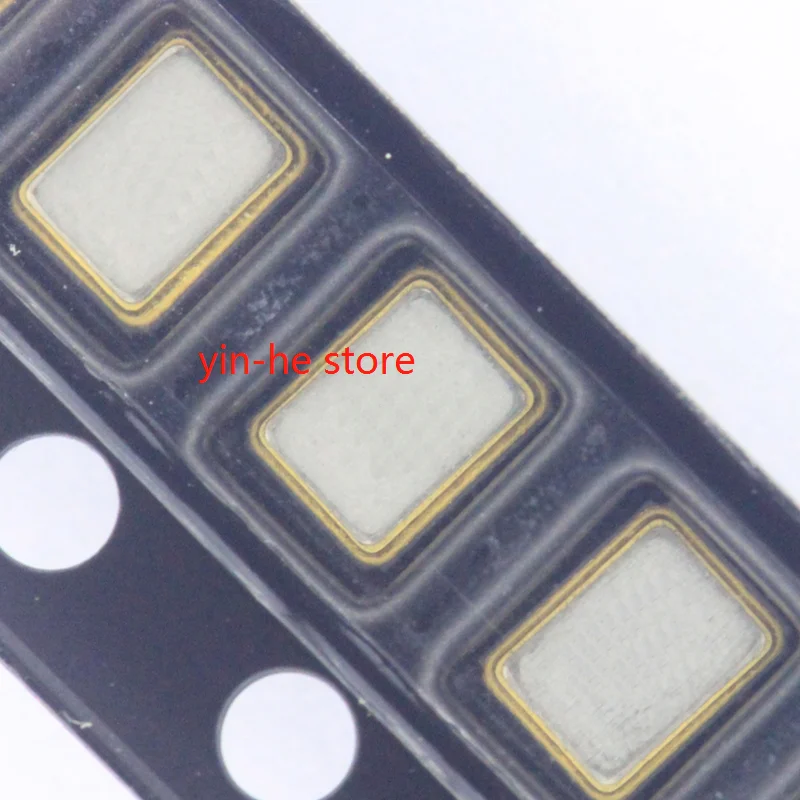OpenPilot CC3D Revolution Flight Controller + Oplink + M8N GPS + Distribution Board for RC Drone FPV Racing
Description
OpenPilot CC3D Revolution Flight Controller + Oplink + M8N GPS + Distribution Board 1. OpenPilot CC3D Revolution Technical description CPU CPU is the STM32F405RGT6 chip, with ARM Cortex-M4 core at 210MIPS, FPU, and saturation arithmetics DSP functions. The chip features a range of built-in hardware modules that can bo programmed once and function independently, requiring little to no CPU overhead. These include 14x multichanel timers, 3x synchronous-sampling ADC serving up to 24 channels, 2x DAC, matrix memory controller with 16-stream DMA, and other. Communication modules include USB2.0, 3x I2C, 3x SPI, 4x USART, 2x CAN and SIDO. All these modules can be configured for accessing the chip pins using a flexible switch matrix, or disabled to save power. It even contains a real time hardware calendar if you want a wake up flight. The software and settings are loaded through USB connector and no-hassle update function in the GCS (Ground Control Station). Modem The board features a built-in 433MHz OPLink Modem. Dimensions OpenPilot products use the standard OpenPilot footprint, and hence has the same dimensions and mounting holes as the OpenPilot CC. CC3D, Revo, GPS, OSD and PipX boards. Ports Servo 1-6: These are the PWM outputs that go to servos or electronic speed controllers (ESCs). Power for the flight controller is typically supplied through these headers from only one of the ESCs, but in most cases, all the servo wires can be left connected. Cutting the pin from servo wires is highly discouraged. If you feel you must disconnect three of the hot wires, use some shrink tube or electrical tape to insulate the removed pin (you may need that positive voltage at a later date.). The positive (Vcc) and negative (Gnd) pins are indicated on this diagram and the board. In rare cases, you may need to also disconnect the ground pin if your ESCs are creating ground loop problems (indicated by a general weirdness in setup). (see the CopterControl - CC3D -Atom Hardware Setup page, Power section, for instructions on how to remove and insulate the extra pins) Servo output pin layout Outside --> ground Middle --> 5V - 8.4V Inside --> signal Flexi-IO Port The receiver port can act as an input or output port depending on the configuration which is set in the Hardware Settings. Configuring the receiver port as an output port allows the user to assign more output channels then the 6 standard servo outputs. PWM -vs- PPM Recievers Please be aware that not all receivers can be configured to use a PPM output. It is the user's responsibility to research this feature in regards to the desired receiver they wish to use for PPM and ensure it can be used as such. Many hours of frustration can occur while trying to troubleshoot why you can't get your radio to connect to the board with PPM if using a receiver than isn't designed with that feature. Simply make sure the receiver can do it before trying to set it up that way. MainPort JST-SH 4-pin. This is a serial USART whose baud rate can be adjusted through the GCS. Optionally, Futaba S.Bus receiver, Spektrum/JR satellite receiver or GPS can be mapped to the MainPort. Default configuration is Telemetry for connecting an RF modem. FlexiPort JST-SH 4-pin. The function of this port also depends on the configuration and can be configured for I2C or Serial. The default configuration doesn't use this port, but it can be used for Telemetry, GPS, Spektrum satellite receivers (all working) and other I2C peripherals (under development). RF Socket Antenna connection socket for on-board OPLink modem. Pwr Sen/Sonar Port JST-SH 4-pin. This port can be configured to accommodate an Autopilot current sensor and a low cost Sonar sensor such as the HC-SR04. It can also be used as a general purpose input/output port or as a one or two channel analog input port. Please note that the output rate on the output channels from the Flexi-IO Port cannot be set individually. If servos are connected to this outputs, you must ensure that they can work with the defined output rate for the bound channel. E.g. if you choose a high output rate to support an octocopter configuration, the update rate from the output channels from the ReceiverPort are bound to the update rate from channels 5 & 6. In this case, you cannot connect analog servo's to these outputs since an analog servo only supports an output rate of 50Hz.. 2. OpenPilot OPLINK First time use with OPLM When you first try to use your OPLM with the GCS, it will not be automatically picked up by the GCS. You first need to go into the 'Firmware' tab and click 'Upgrade & Erase' while the OPLink is disconnected. Then plug in OPLink when the upgrade process asks for it. Once this has been done, your OPLM board will show up at the bottom of your GCS as a connected device. The configuration page icon at the bottom of the page icon list may be hidden without scrolling down, depending on the size of your computer screen. OPLink Mini: 100mW Standalone Radio Modem 3 IO Ports: Micro-B USB, Mainport & Flexiport MMCX Antenna Connector. Weight: 4g Dimensions: 20mm x 29mm Input Voltage: +5v 3. Ublox NEO-M8N GPS(without compass) Receiver Type 72-channel u-blox M8 engine SBAS L1 C/A WAAS, EGNOS, MSAS Nav. Update Rate1 Single GNSS up to 18 HZ Concurrent GNSS up to 10 Hz Position Accuracy 2 2.0 m CEP Acquisition2 Cold Starts 26 s Aided Starts 2 s Reacquisition 1.5 s Sensitivity2 Tracking & Nav 167 dBm Cold Starts 148 dBm Hot Starts 156 dBm Built-In RTC Crystal Built-In Anti Jamming Active CW Detection and Removal. Extra Onboard SAW Band Pass Filter (NEO-M8N/Q) Memory ROM (NEO-M8M/Q) or Flash (NEO-M8N) Data-logger For position, velocity, and time (NEO-M8N) RoHS Compliant (lead-free) Manufactured and fully tested in ISO/TS 16949 certified production sites Uses u-blox M8Chips Qualified: according to AEC-Q100 Operating Temperature 40 C to 85 C Storage Temperature 40 C to 85 C (NEO-M8N/Q) 40 C to 105 C (NEO-M8M) Supply Voltage 1.65 V to 3.6 V (NEO-M8M) 2.7 V to 3.6 V (NEO-M8N/Q) Power Consumption 4 23 mA @ 3.0 V (continuous) 5 mA @ 3.0 V Power Save Mode (1 Hz, GPS mode only) Backup Supply 1.4 to 3.6 V Timepulse Configurable 0.25 Hz to 10 MHz Qualification according to ISO 16750 NEO-M8N-0 u-blox M8 Concurrent GNSS LCC Module TCXO, flash, SAW, LNA, Usage For CC3D/Mini CC3D/Atom/CC3D Revolution Flight Controller Built-in Compass. Features: Quick satellite searching, only need 10s to find 6 satellite in open space Support GPS+BD+SBAS, or GPS+GLONASS+SBAS Assistance AssistNow GNSS Online AssistNow GNSS Offline (up to 35 days)3 AssistNow Autonomous (up to 6 days) OMA SUPL & 3GPP compliant Oscillator TCXO (NEO-M8N/Q) Crystal (NEO-M8N) WIth GPS folding antenna base Noise Figure On-chip LNA (NEO-M8M). Extra LNA forLowest Noise Figure (NEO-M8N/Q) Ublox new generation GPS NEO-M8N is very quick to searching signal, of high positioning precision and efficiency. Supported Antennas Active and Passive Odometer Travelled Distance Support European, Russian GLONASS, Japan China Module supports GPS+Big Dipper+SBAS or GPS+GLONASS+SBAS Package included: 1 x OpenPilot CC3D Revolution Flight Controller 1 x OPLINK 1 x Ublox M8N GPS 2 x 433MHz Antenna 1 x Distribution Board
Price history chart & currency exchange rate
Customers also viewed

$12.00
Cute Girl On Deer Abstract Feather Flower 3 Piece Canvas Wall Picture Painting Wall Art Modular Picture Canvas Unframed Print
aliexpress.com
$31.04
2023 Dragon Ball Spring and Autumn New Children's Wear Sweater Trousers Two-piece Fashion Cotton Long-sleeved Suit
aliexpress.com
$1.71
Dish Scrubber Handy Kitchen Cleaning Sponge Abrasion-proof Durable Compressed Sponges Strong Water Absorption Capacity
aliexpress.com
$4.19
Ceramic Heating Core Solderer Fast Heating 60w Soldering Iron Set Efficient Ceramic Heater Handheld Electric Tin for Electronic
aliexpress.com
$4.41
Мужская футболка Iglooghost, хлопковая одежда Aphex, креативные футболки с коротким рукавом и круглым вырезом, идея для подарка
aliexpress.com
$2.60
20PCS 12.288MHZ SMD crystal oscillator SMD3225 12.288MHZ 20PF capacitive load passive crystal oscillator crystal resonator
aliexpress.com
$9.95
Womens Snow Gloves Waterproof Snowboarding Gloves Snow Ski Gloves Windproof Warm Snowboard Gloves Anti-Slip Girls Winter Gloves
aliexpress.com
$8.80
SK5 Dog Hair Clipper Blade 10 Replacement Hair Clipper Blade Electric Clipper Accessories
aliexpress.com
$6.11
4PC/5PC Woodworking Countersink Auger Hole Countersink Chamfering Integrated Drill Bit Hexagon Shank Countersink Drill
aliexpress.com
$96.88
Rubber Sole Bimooth Super High Heels Weeding Footwear Women Shoes Lady Boots Point Toe Party Show Fashion Dress Cloth GH175
aliexpress.com
$20.49
Vintage Waterproof Backpack Men Luxury College School Bags Casual PU Leather Backpacks Travel Retro 15.6 Inch Laptop Bag For Men
aliexpress.com
$34.32
Li Ning Серия Фитнес Повседневные Простые Однотонные Прямые Брюки Средней Посадки Вязаные Спортивные Штаны Женские Брюки Черные AYKV092-1 XS
joom.com
$14.93
Женская летняя хлопковая шелковая свободная юбка - Большие размеры, подходит для беременных, стиль для отдыха в Юго-Восточной Азии One Size (80-150 cm)
joom.com
$21.75
Модные солнцезащитные очки квадратной формы оверсайз - Декоративные линзы для моды и стиля, Стильные очки, Элегантные очки
joom.com
$302.24
ONITSUKA TIGER X Astro Boy Выстиранный Свитшот Модный Повседневный Свитер Унисекс топы Фиолетовый 2183B566-500 XS
joom.com
$19.42
Винтажная толстовка с капюшоном Arctic Monkeys с графическим принтом на молнии, флисовая куртка свободного кроя на осень и зиму, толстовка с капюшоном в стиле ретро-рок и хип-хоп 3XL
joom.com
$10.11
Ювелирное кольцо из стерлингового серебра 925 пробы, швейцарский голубой топаз, размер 7
joom.com
$16.25
Совместим с 22 моделями BYD Song PLUS: Бокс подлокотника и органайзер для хранения в центральной консоли для внутренней отделки и модификации
joom.com
$8.63
Цвет Однотонный Модный Большой Металлический Кольцевой Декор Женское Ожерелье-Коллар из ПУ Кожи
joom.com
$38.17
uxcell Датчик износа задних тормозных колодок 34356799736 14-17 для BMW Mini для Cooper
joom.com
$24.31
Xiaomi Pad 6/5 Pro/MAX, 11 Кожаный чехол-подставка Redmi SE 2023 2024 MatePad SE 11 розовый
joom.com
$5.67
Латунные штуцеры-ёлочки, адаптер-соединитель, высокая прочность, нержавеющие, коррозионностойкие, штуцеры-ёлочки, аксессуары 3/8inch 8 mm
joom.com
$40.96
Плюшевые Теплые Ботильоны Женские Легкие Нескользящие Ботинки на Плоской Подошве для Женщин Замшевые Водонепроницаемые Зимние Снежные Ботинки Botas De Invierno Para Mujer 40 чёрный
joom.com
$48.00
Winter fisherman s hat children fleece thickened warm plush ear protector basin hat big head circumference showing face small bucket hat adjustable
joom.com
$35.82
Модные удобные тапочки на танкетке, хлопковые тапочки, женские зимние 2025, новые, бархатные, для девочек, милые мультяшные хлопковые туфли, детские 41
joom.com
$11.74
Нержавеющая сталь Лапша Пицца Антипригарный Ролик для теста Кухонные аксессуары Скалка Инструмент для выпечки L
joom.com
$9.55
«Игольчатые аксессуары из нержавеющей стали с золотым гальваническим покрытием для рукоделия» 45mm
joom.com
$35.72
Мужской модный топ кэжуал с короткими рукавами, лацканами и длиной до плеч XL фиолетовый
joom.com






